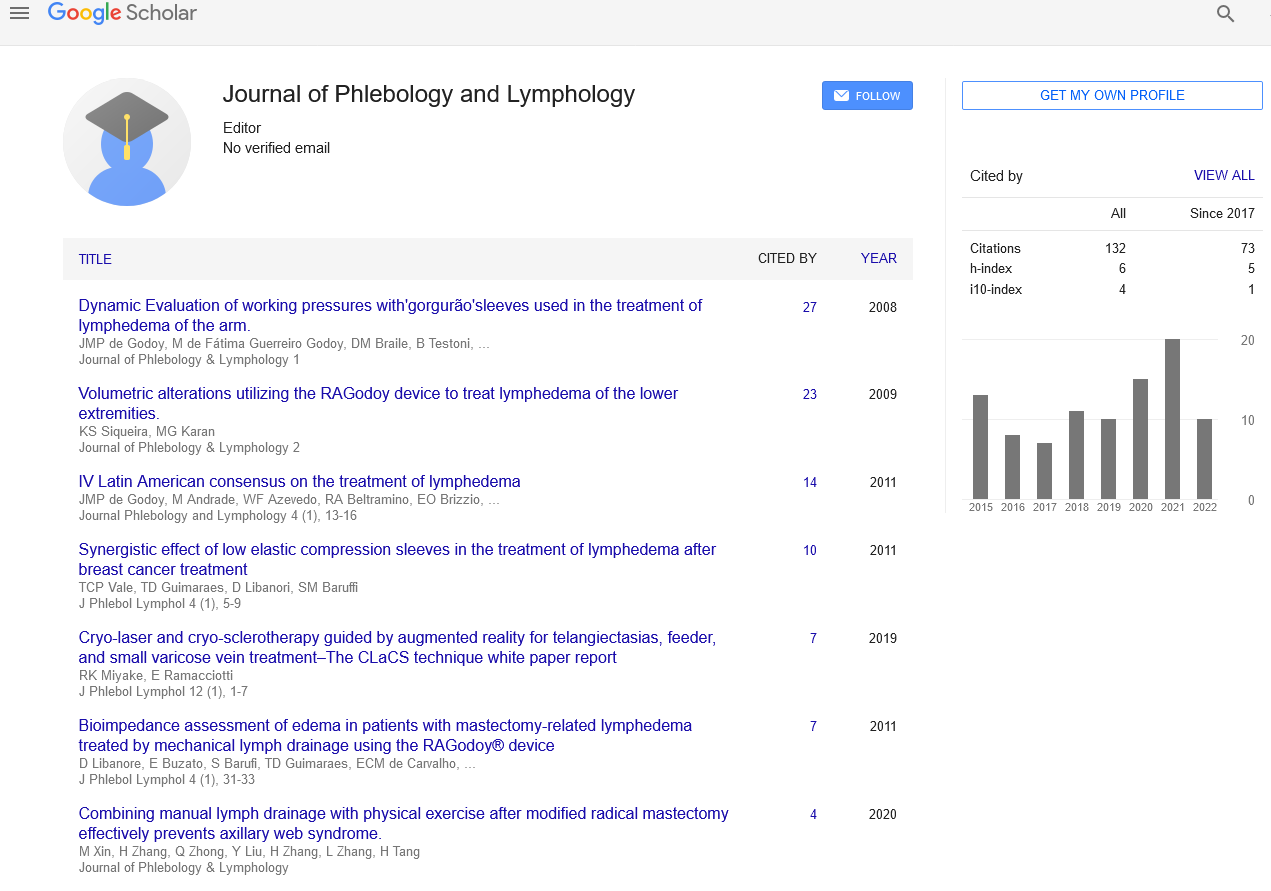Acute leg edema following endoscopic knee surgery: a complication and management approach
Received: 02-Apr-2023, Manuscript No. puljpl-23-6789; Editor assigned: 05-Apr-2023, Pre QC No. puljpl-23-6789 (PQ); Accepted Date: Apr 26, 2023; Reviewed: 20-Apr-2023 QC No. puljpl-23-6789 (Q); Revised: 25-Apr-2023, Manuscript No. puljpl-23-6789 (R); Published: 27-Apr-2023
Citation: Sultan M. Acute leg edema following endoscopic knee surgery: a complication and management approach. 2023; 16(2):1-2.
This open-access article is distributed under the terms of the Creative Commons Attribution Non-Commercial License (CC BY-NC) (http://creativecommons.org/licenses/by-nc/4.0/), which permits reuse, distribution and reproduction of the article, provided that the original work is properly cited and the reuse is restricted to noncommercial purposes. For commercial reuse, contact reprints@pulsus.com
Abstract
Acute leg edema is an uncommon but potential complication following endoscopic knee surgery. This article discusses the occurrence of sudden leg edema after endoscopic knee surgery, its possible causes, and management strategies. The importance of early recognition and appropriate intervention to mitigate this complication is emphasized community on the lymphatic system, its activities, and current developments in lymphology research..
Key Words
Endoscopic knee surgery; Acute leg edema; Complications; management; Postoperative edema; Knee arthroscopy
Introduction
The Endoscopic knee surgery, including knee arthroscopy, has revolutionized the management of knee conditions, offering minimally invasive procedures with faster recovery times. However, like any surgical procedure, endoscopic knee surgery is not without its complications. One uncommon yet notable complication is the sudden onset of leg edema following the surgery. This article aims to shed light on the occurrence, potential causes, and appropriate management of acute leg edema post endoscopic knee surgery.
Acute Leg Edema: Causes and Presentation Acute leg edema, also known as sudden leg swelling, can be a distressing postoperative complication following endoscopic knee surgery. It typically presents within the first few hours to days after the procedure. The edema is characterized by an abnormal accumulation of fluid in the tissues of the leg, leading to noticeable swelling, pain, and discomfort.
Several potential causes may contribute to the sudden onset of leg edema following endoscopic knee surgery The surgical procedure itself can disrupt the venous and lymphatic systems in the knee, leading to impaired circulation and fluid retention in the leg. The altered drainage mechanisms can result in edema.
Surgery triggers an inflammatory response in the body, and this postoperative inflammation can cause localized swelling in the leg. Inflammatory mediators can promote fluid accumulation in the tissues.The patient's position during endoscopic knee surgery may put pressure on specific areas, hindering blood flow and lymphatic drainage. Prolonged pressure can contribute to leg edema In rare cases, acute leg edema may be a result of compartment syndrome, where increased pressure within the compartments of the leg impairs blood flow, leading to severe swelling and potential damage to muscles and nerves. Management and Intervention Strategies: Early recognition and appropriate management of acute leg edema following endoscopic knee surgery are crucial to prevent complications and ensure a smooth recovery. The following strategies can be employed Elevating the affected leg and applying ice packs can help reduce swelling and inflammation. Elevating the leg above heart level promotes drainage and minimizes edema.The use of compression garments or bandages can aid in reducing swelling and improving circulation. Compression helps prevent excessive fluid buildup in the leg.Physical Therapy: Gentle exercises and mobility-enhancing activities guided by a physical therapist can assist in promoting blood circulation and reducing edema. Gradual movement helps prevent stiffness and discomfort.
Medication Anti-inflammatory medications prescribed by the surgeon can help manage postoperative inflammation and associated discomfort. Monitoring and Follow-Up: Regular monitoring of the edema, wound healing, and patient progress is vital. Prompt follow-up appointments allow healthcare providers to assess the progress and adjust the management plan accordingly.
Conclusion
Acute leg edema following endoscopic knee surgery is a rare but significant complication that requires vigilant monitoring and timely intervention. Understanding the potential causes and employing appropriate management strategies, including elevation, compression, physical therapy, and medication, can help mitigate the effects of edema and facilitate a smoother recovery for the patient. It is crucial for healthcare disseminating this knowledge, we hope to inspire further exploration of the lymphatic system and encourage the development of innovative diagnostic tools and therapeutic strategies for lymphatic disorders. Continued research in lymphology holds great potential for improving human health, from promoting tissue regeneration to combating cancer metastasis, and underscores the importance of interdisciplinary collaborations in unraveling the complexities of the lymphatic system. professionals to remain vigilant and proactive in managing this complication to ensure optimal postoperative outcomes for individuals undergoing endoscopic knee surgery.





